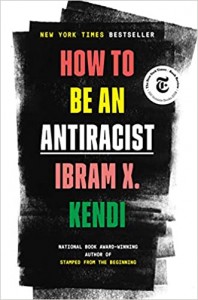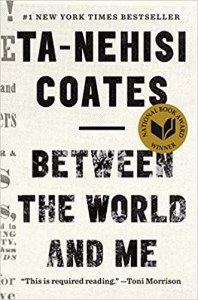When we say that racism is systemic, it is to say that it is so embedded into our culture that we aren’t aware that it is there. That is how Ibram X. Kendi starts off his book, How to be an Antiracist. In the forward, he describes how his self-doubt and confidence was so low that he had only applied to two colleges so he’d only have to deal with two rejection letters. (He was accepted by both.) Later, as he looked back at his life, he wondered if he should have taken more history classes and paid more attention when he was growing up. One moment stands out: He recalls with chagrin that he was a young, Black, high school student presenting at a Martin Luther King, Jr. speech contest. The irony of the moment was that he was representing his high school that was named after General Stonewall Jackson, legendary Confederate General.
Kendi combines personal stories, historic events, and snippets from well-known authors to illustrate the point that it isn’t enough to not be a racist: One must strive to be an anti-racist. He explains:
What’s the problem with being “not racist”? It is a claim that signifies neutrality: “I am not a racist, but neither am I aggressively against racism.” But there is no neutrality in the racism struggle. The opposite of “racist” isn’t “not racist.” It is “antiracist.”
As Kendi goes through different chapters of the book, he shows how racism is embedded into all facets of our culture. Assumptions and judgments about people who are not like ourselves are part of everyone’s identity, he writes, even his own. In a chapter on sexuality, he confronts his own assumptions he had about gay men when he discovered his best friend’s behavior didn’t match the stereotypical gay male behaviors he had learned and expected. To save his friendship, he vowed to change.
This book is compelling because of the deft way Kendi weaves his personal stories and revelations with historical references and current events. Yet, in spite of all the ways racism is discussed in the book, it ends optimistically. In discovering that he had stage 4 colon cancer, he quickly sees the parallel to systemic racism today:
I have cancer. The most serious stage. Cancer is likely to kill me. I can survive cancer against all odds.
My society has racism. The most serious stage. Racism is likely to kill my society. My society can survive cancer against all odds.
Aggressive treatment, surgery, chemotherapy, all were used and yes, he did survive. He had the help and support of surgeons, pathologists, and his family. He asks, “What if we treated racism like we do cancer?” The lesson is that there isn’t one method to combat racism. Ending racism isn’t just one person’s fight; everyone must contribute to the effort. And if you are going to fight racism, you can’t just not be a racist. Don’t be neutral, be an antiracist.
In contrast, Ta-Nehisi Coates work, Between the World and Me, is a deeply personal letter to his teen-aged son. In this narrative, Coates addresses the reality of being a Black man in the United States. This book is grim, as he describes his fear and anger growing up in Baltimore and then going to college at Howard. Much of the book shares his personal history and experiences, while it also reveals his anger and frustration of current events. He is particularly angry at the persistent murders of so many Black men at the hands of white police officers and other white men for no reason other than they were wearing a hoodie or playing loud music.
The fear and suspicion that he internalized stayed with him and popped up unexpectedly years later during a trip to Paris. He was walking down the streets after dinner because a new friend wanted to “show him an old building,” and in the back of his mind, he wasn’t sure if this really was an innocuous walk or if he was being led to an ambush in a quiet alley. But this friend just showed him the historic building, shook his hand, and said good night.
Coates’ letter to his son has a similar theme to Kendi’s book – racism is embedded into American culture. But in contrast, Coates’ message is for his son, and for other Black readers: You might not be able to eliminate the racism of others. It is their struggle, and ultimately others will have to make the change within themselves. He tells his son that he needs to remember his history, culture, and experiences:
You are growing into consciousness, and my wish for you is that you feel no need to constrict yourself to make other people comfortable. … I would have you be a conscious citizen of this terrible and beautiful world.
Both books are available at the Ramsey County Law Library.
Ibram X. Kendi, How to be an Antiracist, New York: One World, 2019.
Ta-Nehisi Coates, Between the World and Me, New York: One World, 2015.

